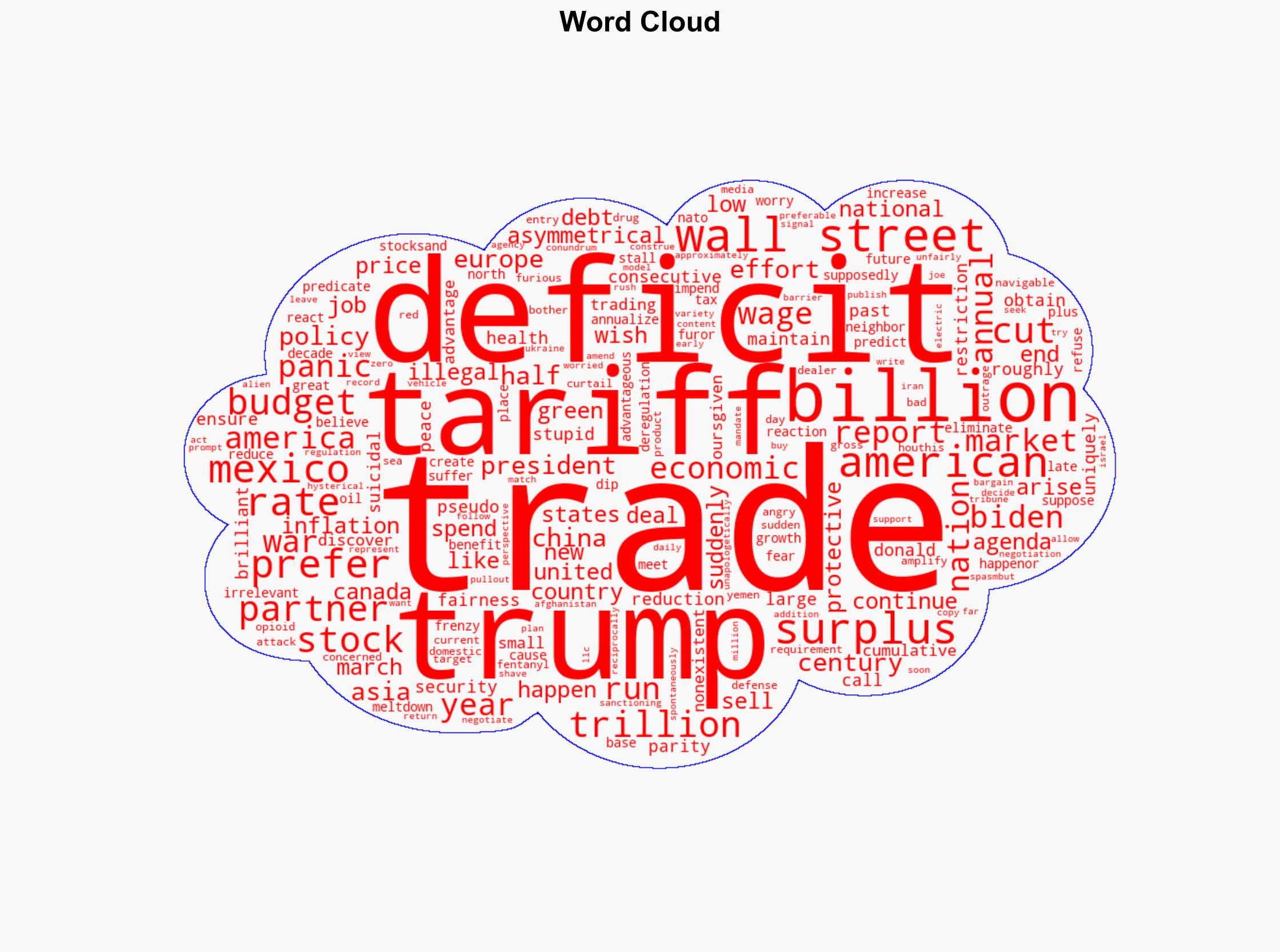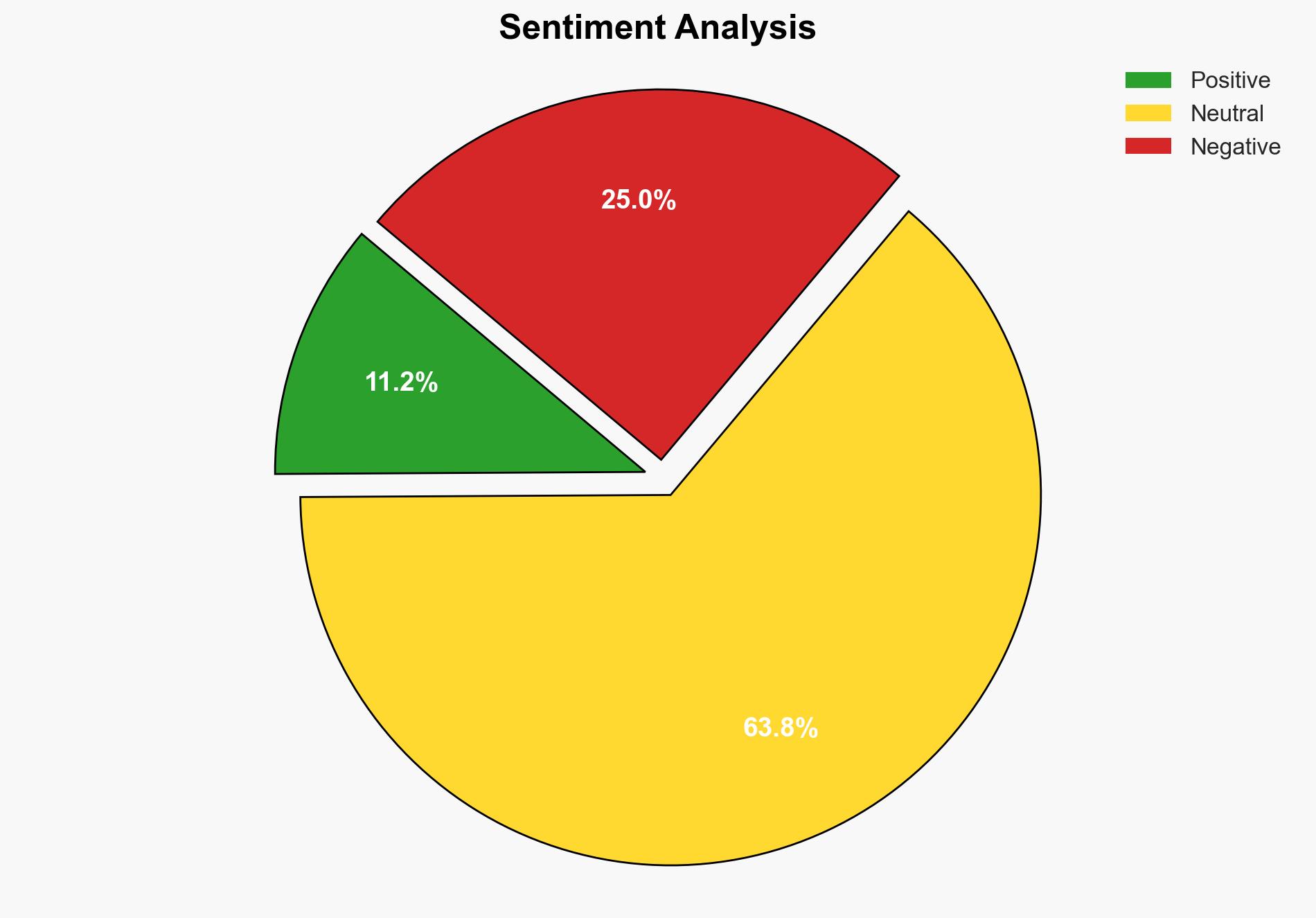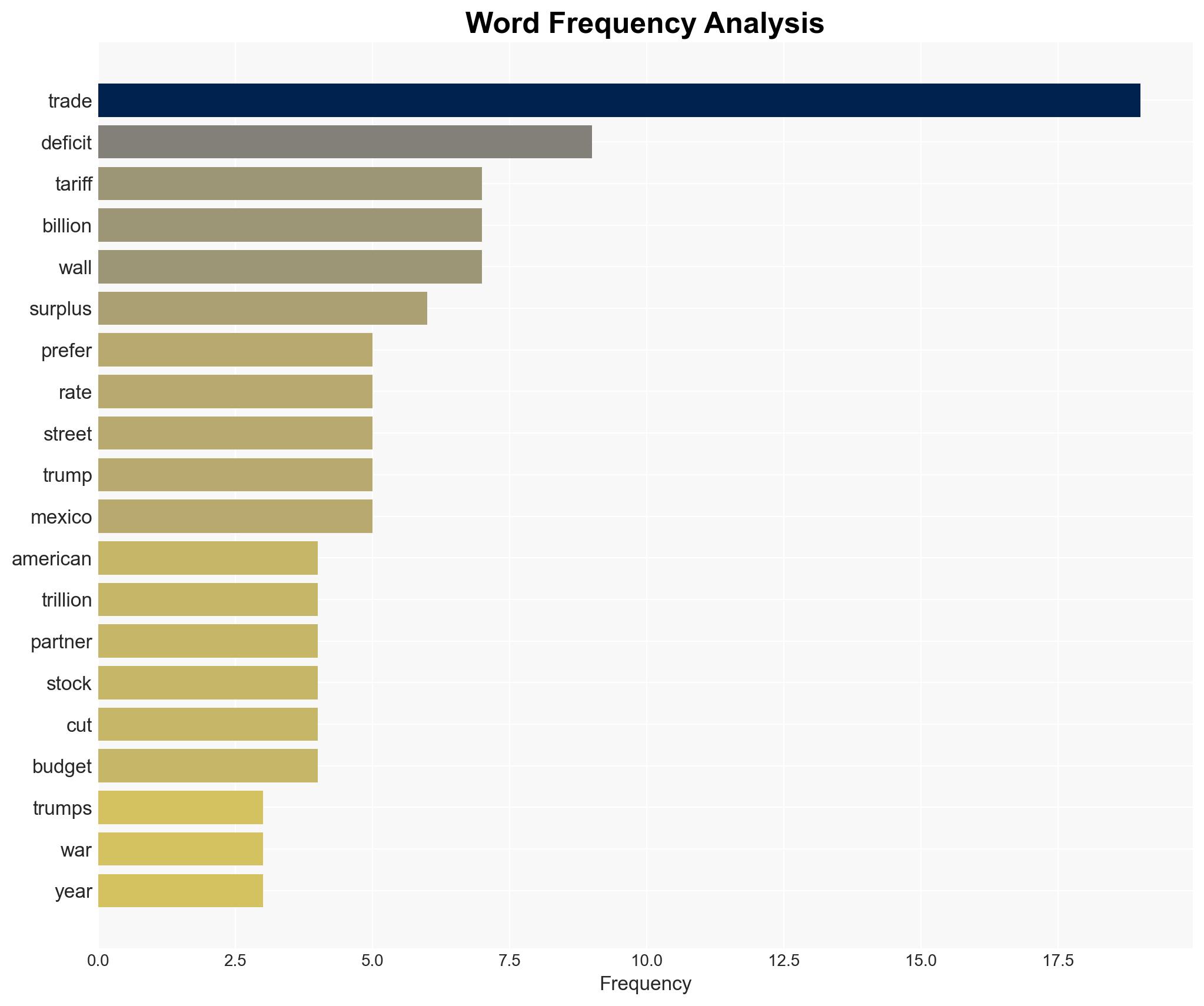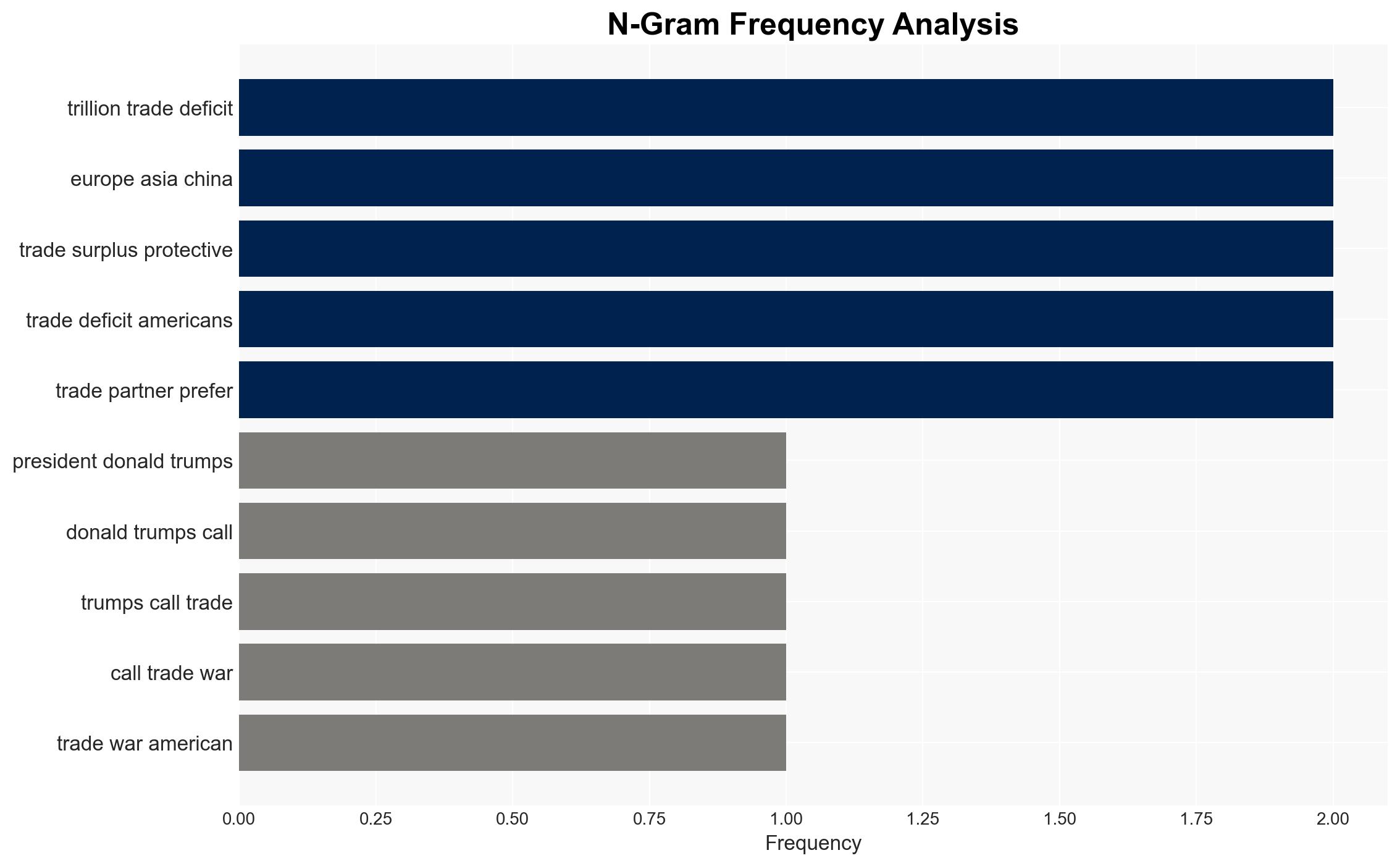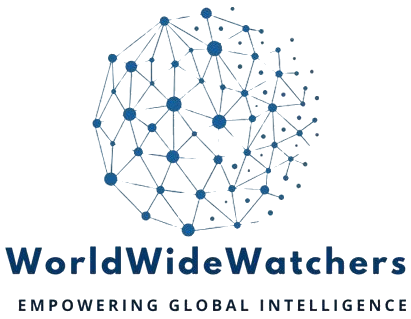10 Tariff Questions Never Asked – Daily Signal
Published on: 2025-04-11
Intelligence Report: 10 Tariff Questions Never Asked – Daily Signal
1. BLUF (Bottom Line Up Front)
The analysis of the ongoing trade dynamics reveals a complex interplay between the United States and its global trade partners. The focus is on the U.S. efforts to address trade imbalances, perceived as a “trade war,” and the implications of these efforts on economic stability and international relations. Key findings suggest that the U.S. aims to reduce its trade deficit and achieve tariff parity, while other nations maintain surpluses through protective measures. The strategic recommendation is to enhance diplomatic engagement and economic policy adjustments to mitigate potential economic disruptions.
2. Detailed Analysis
The following structured analytic techniques have been applied for this analysis:
General Analysis
The U.S. trade policy under scrutiny is characterized by efforts to balance trade deficits and address asymmetrical tariffs imposed by other nations. The analysis questions the rationale behind the preference for trade surpluses by countries like China and those in Europe and Asia. The U.S. trade deficit, exceeding $1 trillion, contrasts with the surpluses of its trade partners, raising questions about the economic strategies of involved nations. The impact of these policies on domestic markets, particularly Wall Street’s reaction to economic indicators such as job creation and inflation rates, is also examined.
3. Implications and Strategic Risks
The strategic risks associated with the current trade policies include potential economic instability and strained international relations. The focus on reducing trade deficits may lead to retaliatory measures from trade partners, affecting global market dynamics. The U.S. economic agenda, including tax cuts and deregulation, could exacerbate market volatility. Additionally, the trade relationship with North American neighbors poses risks if imbalances persist, potentially leading to diplomatic tensions.
4. Recommendations and Outlook
Recommendations:
- Engage in multilateral negotiations to address trade imbalances and reduce the risk of retaliatory tariffs.
- Implement regulatory measures to stabilize domestic markets and protect against economic shocks.
- Enhance transparency and communication with international partners to foster trust and collaboration.
Outlook:
In a best-case scenario, diplomatic efforts lead to balanced trade agreements and economic stability. The worst-case scenario involves escalating trade tensions resulting in economic downturns and strained international relations. The most likely outcome is a gradual adjustment of trade policies with moderate improvements in trade balances and economic indicators.
5. Key Individuals and Entities
The report references Donald Trump in the context of U.S. trade policy and economic agenda. The analysis does not provide specific roles or affiliations but emphasizes the influence of key individuals on trade dynamics and economic strategies.
